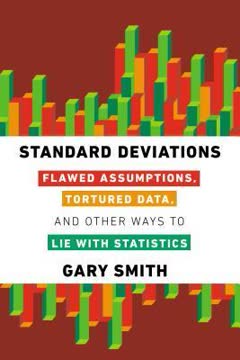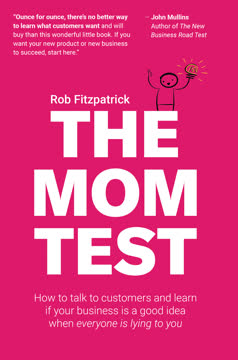Key Takeaways
1. Embrace change through understanding its impact
"People judge the proposed change. They judge the benefits and they are evaluating the risks involved. If they come to the conclusion that the change is good they accept it, if they come to the conclusion that the change is bad they resist it."
Change is not inherently resisted. People evaluate changes based on perceived benefits and risks. To successfully implement change:
-
Address four key factors:
- The potential benefits ("pot of gold")
- The effort required ("climbing the mountain")
- The consequences of not changing ("alligator")
- What might be lost by changing ("mermaid")
-
Understand and correct misconceptions about these factors
-
Demonstrate how the change aligns with individuals' and organization's interests
By framing change in terms of these elements, leaders can more effectively gain buy-in and support for new initiatives.
2. Reduce inventory to increase profitability
"Paul, don't you realize how important this is? Look at the global picture…"
Inventory reduction dramatically improves ROI. By reducing inventory levels, companies can:
- Increase inventory turns (from 6 to over 30 per year in Paul's case)
- Improve cash flow and free up capital
- Reduce storage and handling costs
- Minimize obsolescence risk
However, inventory reduction must be balanced with maintaining product availability. The key is to hold the right amount of inventory at the right locations, based on actual demand patterns and replenishment times.
3. Implement daily replenishment based on actual consumption
"We are now running the most efficient store of the whole chain. But I think we can still improve. We still carry a lot of excess inventory."
Daily replenishment aligns inventory with actual demand. This approach involves:
- Tracking daily sales data for each SKU
- Replenishing only what has been sold
- Maintaining a minimal safety stock (e.g., 2 weeks' worth)
Benefits of this system include:
- Reduced inventory levels
- Improved product availability
- Increased sales due to better stock assortment
- Higher inventory turns and profitability
Implementing this system requires close coordination between stores, warehouses, and suppliers, as well as robust data tracking and analysis capabilities.
4. Aggregate inventory at the most accurate forecast point
"The forecast is the worst at the store level, and we can't change that. According to chaos theory, trying to predict accurately what the demand will be for a particular SKU in a particular store is as useful as trying to accurately predict the weather a month in advance."
Centralize inventory to improve forecast accuracy. Aggregating demand across multiple stores or regions reduces variability and improves forecast accuracy:
- Store-level forecasts: Least accurate
- Regional warehouse forecasts: 3x more accurate than store-level
- Central warehouse forecasts: 3x more accurate than regional-level
By holding inventory centrally and distributing based on actual demand:
- Overall inventory levels can be reduced
- Product availability improves
- Flexibility to respond to demand fluctuations increases
This approach requires efficient logistics to quickly move products from central locations to where they're needed.
5. Shorten supply lead times through strategic partnerships
"We place small orders, weekly orders, just the transportation time in advance. Transportation time plus one week for cutting and sewing, to be exact."
Collaborate with suppliers to reduce lead times. By working closely with manufacturers:
- Place smaller, more frequent orders based on actual demand
- Reduce the time between order placement and delivery
- Maintain flexibility in product mix while ensuring overall volume
Key strategies:
- Negotiate umbrella agreements guaranteeing total purchase volumes
- Hold inventory as raw materials (e.g., dyed fabric) rather than finished goods
- Allow manufacturers to adjust production schedules with short notice
These approaches reduce risk for both retailers and manufacturers while improving responsiveness to market demands.
6. Overcome resistance by addressing concerns and demonstrating benefits
"If you understand that fundamental truth, you'll listen to their arguments and you have a chance to change their mind. If you stick to your belief that they are programmed to resist, you'll be a very bad manager because your alternatives narrow down to giving up or to using force."
Address concerns to gain support. When implementing changes:
- Listen actively to objections and concerns
- Provide data and examples demonstrating benefits
- Address potential risks and how they'll be mitigated
- Show how the change aligns with individual and organizational goals
Specific strategies:
- Use pilot programs to prove concepts
- Provide clear explanations of how new systems will work
- Offer training and support during transition periods
- Celebrate early successes to build momentum
By engaging stakeholders and addressing their concerns, leaders can build trust and increase buy-in for organizational changes.
7. Transform purchasing strategies to align with market demands
"Caroline smiled. She clicked open the list Roger had compiled of items he could not obtain from the other regions. In less than fifteen seconds she extracted the items purchased from Gupta's company."
Adapt purchasing to support agile inventory management. Modern purchasing strategies should:
- Focus on flexibility and responsiveness
- Leverage data to identify high-demand items
- Negotiate contracts that allow for frequent, small-batch orders
- Build strong relationships with key suppliers
Techniques to improve purchasing:
- Use real-time sales data to inform ordering decisions
- Implement vendor-managed inventory systems where appropriate
- Explore options for local or near-shore production to reduce lead times
- Develop contingency plans for supply chain disruptions
By aligning purchasing strategies with inventory management goals, companies can reduce costs and improve product availability.
8. Balance inventory reduction with maintaining product availability
"To protect sales we want to hold more inventory, but to reduce investment and surpluses we have to hold less inventory."
Find the optimal inventory level. Balancing inventory reduction and product availability requires:
- Analyzing sales patterns to identify optimal stock levels
- Implementing efficient replenishment systems
- Maintaining safety stock for key items
- Improving forecast accuracy through data analysis
Strategies to achieve this balance:
- Use ABC analysis to prioritize inventory management efforts
- Implement automated reorder points based on sales velocity
- Utilize cross-docking to reduce warehouse inventory
- Develop contingency plans for unexpected demand spikes
The goal is to minimize inventory investment while ensuring products are available when customers want them.
9. Utilize cross-shipments to optimize inventory distribution
"So many times there are real surpluses in one region of things that are missing in another."
Leverage cross-shipments to balance inventory. Cross-shipments can:
- Reduce overall inventory levels
- Improve product availability across regions
- Minimize markdowns and obsolescence
Implementing effective cross-shipment strategies:
- Develop real-time visibility into inventory across locations
- Create efficient processes for identifying and executing transfer opportunities
- Balance the costs of transfers against potential sales gains
- Establish clear guidelines for when cross-shipments are appropriate
While cross-shipments can be valuable, they should be seen as a tool to optimize inventory distribution rather than a solution to systemic inventory management issues.
10. Adapt forecasting methods to improve accuracy
"The forecast is the worst at the store level, and we can't change that. According to chaos theory, trying to predict accurately what the demand will be for a particular SKU in a particular store is as useful as trying to accurately predict the weather a month in advance."
Improve forecasting through aggregation and data analysis. To enhance forecast accuracy:
- Aggregate demand data at higher levels (e.g., regional, national)
- Utilize advanced analytics and machine learning techniques
- Incorporate external factors (e.g., weather, economic indicators)
- Continuously refine forecasts based on actual sales data
Strategies for better forecasting:
- Implement collaborative forecasting with suppliers and retailers
- Use statistical methods to identify and account for seasonality and trends
- Develop separate forecasts for base demand and promotional impacts
- Regularly review and adjust forecasting models based on performance
While perfect accuracy is impossible, improved forecasting can significantly reduce inventory costs and stockouts.
Last updated:
FAQ
What's "Isn't It Obvious?" by Eliyahu M. Goldratt about?
- Retail Challenges: The book explores the challenges faced by retail managers, particularly focusing on inventory management and sales optimization.
- Theory of Constraints: It applies Goldratt's Theory of Constraints to the retail environment, emphasizing the importance of identifying and managing constraints to improve performance.
- Fictional Narrative: The story is told through a fictional narrative, following Paul White, a store manager, as he navigates the complexities of running a successful retail operation.
- Business Insights: Through the narrative, the book provides insights into effective business strategies, particularly in the context of retail operations.
Why should I read "Isn't It Obvious?" by Eliyahu M. Goldratt?
- Practical Application: The book offers practical applications of the Theory of Constraints in a retail setting, making it valuable for retail managers and business professionals.
- Engaging Storytelling: The fictional narrative makes complex business concepts accessible and engaging, providing a unique learning experience.
- Problem-Solving Focus: It emphasizes problem-solving and critical thinking, encouraging readers to identify and address constraints in their own business environments.
- Proven Methodology: Goldratt's methodologies have been widely recognized and applied in various industries, offering readers a proven framework for improvement.
What are the key takeaways of "Isn't It Obvious?" by Eliyahu M. Goldratt?
- Identify Constraints: The book highlights the importance of identifying the primary constraint in a retail operation, which is often the number of customers entering the store.
- Exploit Constraints: It emphasizes exploiting the identified constraint to maximize sales and improve overall performance.
- Subordinate Processes: The narrative demonstrates the need to subordinate all other processes to the decisions made to exploit the constraint.
- Continuous Improvement: The book advocates for continuous improvement and adaptation to changing circumstances to maintain a competitive edge.
How does "Isn't It Obvious?" apply the Theory of Constraints to retail?
- Customer Entry as Constraint: The book identifies the number of customers entering the store as the primary constraint in retail.
- Inventory Management: It addresses how to manage inventory effectively by reducing shortages and surpluses, thus improving sales.
- Sales Optimization: The narrative shows how optimizing sales processes can lead to better exploitation of the constraint.
- Systematic Approach: It provides a systematic approach to identifying and managing constraints, leading to improved business performance.
What are the 5 Focusing Steps for Retail in "Isn't It Obvious?"?
- Identify the Constraint: Recognize that the number of people entering the shop is the primary constraint.
- Exploit the Constraint: Focus on strategies to increase sales from the existing customer base.
- Subordinate Everything Else: Align all other processes to support the exploitation of the constraint.
- Elevate the Constraint: Implement changes that lead to an increase in the number of customers entering the store.
- Repeat the Process: Continuously monitor and adjust strategies to ensure the constraint is effectively managed.
What challenges does Paul White face in "Isn't It Obvious?"?
- Inventory Issues: Paul struggles with managing inventory levels, dealing with both shortages and surpluses.
- Sales Performance: He faces pressure to improve sales performance and profitability in a competitive retail environment.
- Operational Changes: Paul must navigate the complexities of implementing operational changes to improve store performance.
- Team Management: He deals with the challenges of managing a team and gaining their buy-in for new strategies.
How does Paul White improve his store's performance in "Isn't It Obvious?"?
- Inventory Reduction: Paul reduces inventory levels to focus on high-demand items, minimizing shortages and surpluses.
- Daily Replenishment: He implements a system of daily replenishment based on actual sales, improving inventory accuracy.
- SKU Expansion: By adding more SKUs, Paul increases the variety of products available, attracting more customers.
- Collaboration with Warehouse: He works closely with the regional warehouse to ensure timely delivery of needed items.
What role does the regional warehouse play in "Isn't It Obvious?"?
- Centralized Inventory: The warehouse holds a centralized inventory, allowing for more efficient distribution to stores.
- Daily Shipments: It provides daily shipments to stores based on actual sales, reducing the need for large on-hand inventories.
- Cross-Shipments: The warehouse facilitates cross-shipments between regions to address shortages and optimize inventory levels.
- Logistical Support: It plays a crucial role in supporting the new operational model by ensuring timely and accurate deliveries.
What are the best quotes from "Isn't It Obvious?" and what do they mean?
- "Location, location, location." This quote emphasizes the importance of store location in retail success, as it directly impacts customer foot traffic.
- "If it is embarrassingly obvious, it must be right." This highlights the value of simple, straightforward solutions that are often overlooked.
- "The constraint of retail is: the number of people that enter the shop." This underscores the central theme of the book, focusing on customer entry as the primary constraint.
- "Reducing shortages increases customer satisfaction." This quote reflects the book's emphasis on inventory management as a key factor in improving sales and customer experience.
How does "Isn't It Obvious?" address the issue of shortages and surpluses?
- Impact on Sales: The book highlights how shortages lead to lost sales opportunities, while surpluses tie up capital and space.
- Inventory Management: It advocates for better inventory management practices to minimize both shortages and surpluses.
- Daily Replenishment: The narrative demonstrates the effectiveness of daily replenishment based on actual sales data.
- Systematic Approach: It provides a systematic approach to addressing these issues, leading to improved store performance.
What lessons can business professionals learn from "Isn't It Obvious?"?
- Focus on Constraints: Identify and manage the primary constraint in your business to drive improvement.
- Adaptability: Be open to change and willing to adapt strategies to meet evolving business needs.
- Collaboration: Work closely with partners and suppliers to optimize operations and improve performance.
- Continuous Improvement: Embrace a mindset of continuous improvement, always seeking ways to enhance efficiency and effectiveness.
How does "Isn't It Obvious?" illustrate the importance of customer satisfaction in retail?
- Sales Impact: The book shows how customer satisfaction directly impacts sales and profitability.
- Inventory Availability: It emphasizes the importance of having the right inventory available to meet customer demand.
- Positive Experience: The narrative highlights the role of a positive shopping experience in building customer loyalty.
- Word-of-Mouth: It demonstrates how satisfied customers can lead to increased foot traffic through positive word-of-mouth.
Review Summary
Isn't It Obvious? receives positive reviews for its application of the Theory of Constraints to retail management. Readers appreciate Goldratt's storytelling approach, making complex business concepts accessible. The book is praised for its insights on inventory management, supply chain efficiency, and problem-solving in retail. Some reviewers find it less engaging than Goldratt's other works, while others consider it an excellent addition to management literature. The novel format and relatable characters help readers grasp the concepts, though a few find the ending rushed.
Similar Books








Download PDF
Download EPUB
.epub digital book format is ideal for reading ebooks on phones, tablets, and e-readers.









